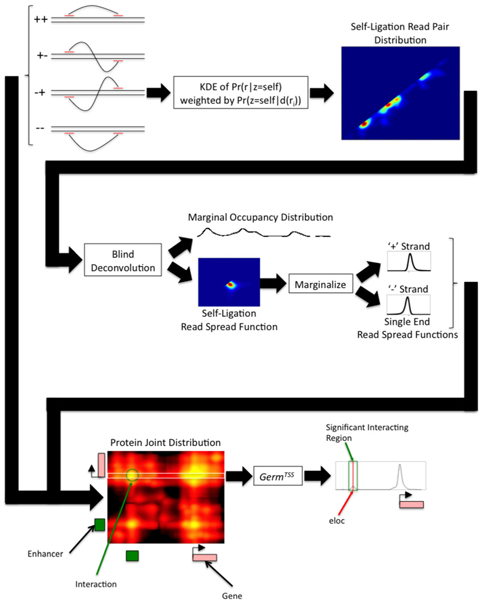Functional Genomics
Chris's paper on high resolution mapping of enhancer-promoter interactions is published in PLoS ONE
RNA Polymerase II ChIA-PET data has revealed enhancers that are active in a profiled cell type and the genes that the enhancers regulate through chromatin interactions. The most commonly used computational method for analyzing ChIA-PET data, the ChIA-PET Tool, discovers interaction anchors at a spatial resolution that is insufficient to accurately identify individual enhancers. We introduce Germ, a computational method that estimates the likelihood that any two narrowly defined genomic locations are jointly occupied by RNA Polymerase II. Germ takes a blind deconvolution approach to simultaneously estimate the likelihood of RNA Polymerase II occupation as well as a model of the arrangement of read alignments relative to locations occupied by RNA Polymerase II. Both types of information are utilized to estimate the likelihood that RNA Polymerase II jointly occupies any two genomic locations. We apply Germ to RNA Polymerase II ChIA-PET data from embryonic stem cells to identify the genomic locations that are jointly occupied along with transcription start sites. We show that these genomic locations align more closely with features of active enhancers measured by ChIP-Seq than the locations identified using the ChIA-PET Tool. We also apply Germ to RNA Polymerase II ChIA-PET data from motor neuron progenitors. Based on the Germ results, we observe that a combination of cell type specific and cell type independent regulatory interactions are utilized by cells to regulate gene expression.
